Wisconsin
Hearing the music of Wisconsin agriculture

by Ashley Hagenow
At the recent Alice in Dairyland Finals, I shared how much I love music. Music has been a constant theme throughout my whole life, and certainly in the role of serving as Wisconsin’s 76th Alice in Dairyland.
Whether I was greeted in the morning with an upbeat tune or used a song to help me fall asleep at night, music was always there, from the very early mornings through the late nights. On my long drives across Wisconsin, I have blasted my favorite songs as I sing along to the lyrics. Sometimes, music was there to provide some background noise or the beat for a little dance break. Music has felt like a constant companion throughout my Alice journey and has certainly provided inspiration to me as I proudly represented Wisconsin’s $104.8 billion agriculture industry this past year.
Telling a story
One of the things I love most about music is that it tells a story. Music tells a story just like Alice in Dairyland tells a story wherever she goes. The different parts of a song are like the different parts of a speech or key message that I’ve shared with audiences across Wisconsin, whether highlighting the economic impact of Wisconsin agriculture, all the opportunities available through careers in agriculture, or personal stories from my experiences in the agriculture industry.
The similarities between music and Alice in Dairyland are numerous. Throughout this incredible experience of serving as Wisconsin’s 76th Alice in Dairyland, here are some of my favorite “songs” I have sung while promoting Wisconsin agriculture.
My journey as the 76th Alice in Dairyland began on July 5. Last summer brought many opportunities to share my key messages across Wisconsin, whether at Farm Technology Days, the Wisconsin State Fair or many of the county fairs in our state. These events were also the opportunity to introduce myself as Alice to consumers across Wisconsin and beyond, just like the intro in a song.
Some memories include riding the 10-horse hitch of Meyer Farms at Farm Tech Days and engaging with our Alice in Dairyland partners for the first time, the cream puff eating contest at the Wisconsin State Fair, visiting my home county fair in Columbia County to host the Sale of Champions, and my first official trip to Door County to visit Washington Island and learn what makes Door County agriculture so diverse and special.
A great journey
Moving into the fall, the adventures of promoting Wisconsin agriculture continued, and my playlist of songs diversified. My top memories include engaging with fourth grade classrooms across the state to promote Wisconsin agriculture and specialty crops in our great state, walking the colored shavings at World Dairy Expo to deliver the Supreme Champion envelope, touring Alsum Farms and Produce to learn more about potatoes and pumpkins, witnessing my first Wisconsin cranberry harvest thanks to Amber Bristow, and traveling internationally with the Ginseng Board of Wisconsin to highlight Wisconsin ginseng and agriculture across the world.
Progressing into the holiday season and the first few months of the new year added new verses to the song of serving as Alice in Dairyland. The annual Holiday Campaign provided memories promoting our Something Special From Wisconsin members and products while making new connections with media outlets across the state. Attending events such as the Wisconsin Association of Fairs Convention and Corn and Soy Expo allowed me to reconnect with many familiar faces in Wisconsin. As a very involved FFA member growing up, I enjoyed sharing memories on social media during National FFA Week in February and how those experiences as an FFA member have shaped my personal and professional journeys in life.
As I prepare for the “outro” of my year serving as Alice in Dairyland, I have made some great recent memories while preparing for what is ahead in the next few months. Coordinating our Wisconsin Cheese Campaign with Dairy Farmers of Wisconsin yielded outcomes such as a national media engagement with RFD-TV and Wisconsin cheese samplings across our great state. We also have been developing our very first supper club campaign with the theme of “Eat Local, Eat Wisconsin With Alice in Dairyland.”
I am so excited to conclude my year as the 76th Alice in Dairyland promoting Wisconsin dairy and our state’s dairy farming families during National Dairy Month in June. I can think of no better way to celebrate this incredible year than through enjoying plenty of Wisconsin dairy products and countless adventures across our state. In just a few short months, I will be passing the microphone (and the keys to Tassie, my flex-fuel Ford Explorer vehicle through the Wisconsin Corn Promotion Board) to Wisconsin’s 77th Alice in Dairyland, as she begins an incredible year of promoting Wisconsin agriculture on July 8.
These are just some of the memories and experiences that I will cherish, and they truly demonstrate how something like Alice in Dairyland can bring an entire state together. Everyone is excited to “hear the music” when it comes to Wisconsin agriculture, and it has been the honor of a lifetime to represent this industry for the past year. Thank you all for being a part of this journey!
Hagenow is the 76th Alice in Dairyland.

Wisconsin
Legislator-led committee to study sandhill crane management, including potential hunting season
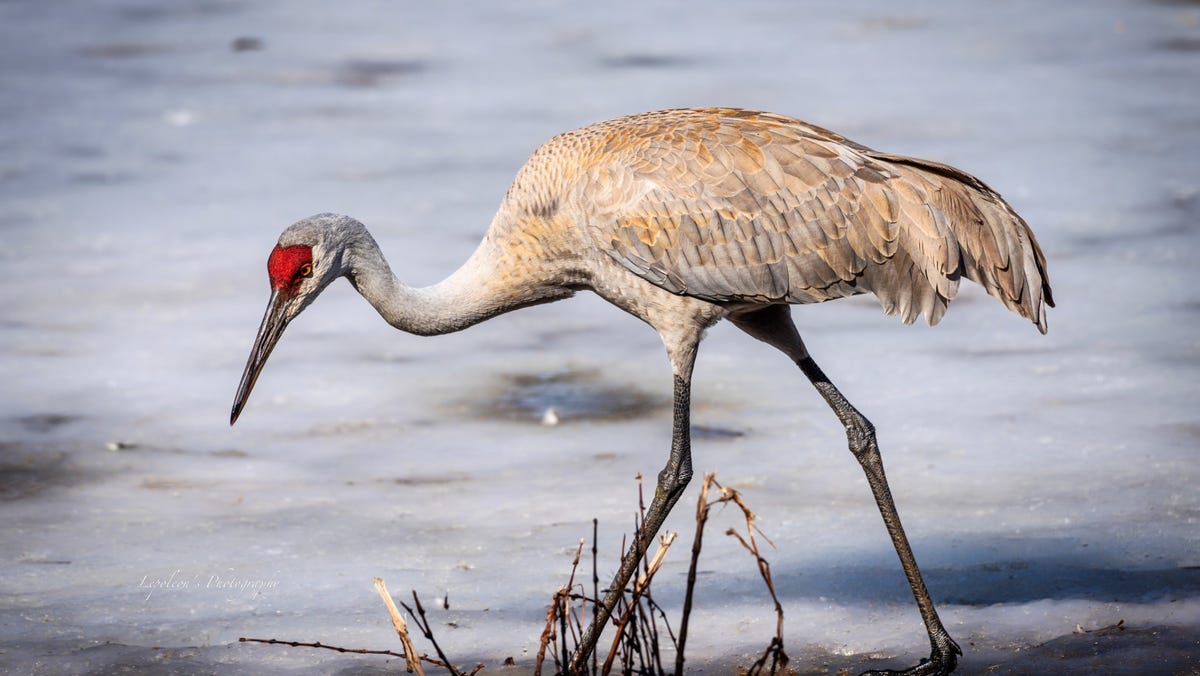
Whooping cranes are making a stable but delicate comeback
Whooping cranes, once on the brink of extinction, are making a stable but delicate comeback, including the eastern flock in Wisconsin.
State legislators this summer will lead a committee to review and recommend options for sandhill crane management in Wisconsin, possibly to include a hunting season for the species.
The Legislative Council Study Committee on Sandhill Cranes is slated to begin meeting in July, said committee chair Rep. Paul Tittl (R-Manitowoc).
The group “shall examine population trends and determine whether any changes to state law would effectively address the incidence and consequences of crop damage caused by sandhill cranes in this state,” according to the committee description.
Its charge includes recommending “legislation to manage the population of sandhill cranes and address the agricultural impact of sandhill cranes.”
As part of its review of policy options, the committee may consider whether the Department of Natural Resources should seek federal approval to establish a hunting season for sandhill cranes.
But Tittl said it would be a “deep dive” and also consider non-hunting options to provide funding to farmers suffering crop losses from cranes.
In addition to Tittl, the sandhill crane study committee will include vice chair Sen. Romaine Quinn (R-Cameron), Rep. Dave Considine (D-Baraboo), Sen. Mark Spreitzer (D-Beloit) and likely eight public members, mostly representatives of conservation, wildlife and farming groups.
Tittl said he reviewed applications and recommended eight public members on May 21; the applications were passed along for review and likely approval by the Republican-led Wisconsin Joint Legislative Council.
The sandhill crane committee is one of five Legislative Council Study Committees scheduled for this summer. A handful of such committees, selected by the Joint Legislative Council, are held in even-numbered years.
Sandhill cranes have increased substantially in number in Wisconsin in recent decades. In autumn 2022 61,098 sandhills were counted in Wisconsin, part of 107,140 birds in the eastern population of the species, according to the U.S. Fish and Wildlife Service.
The eastern population count was conducted in 10 states and two provinces of Canada. Wisconsin forms the core of the eastern population’s breeding range and typically has the largest number of cranes of any state or province in the region.
In recent years cranes have caused about $1 million annually in crop damage in Wisconsin, according to the U.S. Department of Agriculture. Most occurs in spring on newly planted corn but potato and bean growers also report losses later in the year.
However the state currently has no program to compensate farmers for losses due to sandhill cranes.
The sandhill crane is currently protected in the state. In addition to approval from the U.S. Fish and Wildlife Service, a hunting season would require the Legislature to pass and governor to sign a bill allowing a sandhill crane hunt in Wisconsin.
Under current laws, farmers who incur crop damage can shoot sandhills on their property after obtaining a federal permit but cannot eat or otherwise utilize the carcasses. About 1,000 cranes are killed on federal depredation permits each year in Wisconsin, according the USDA.
If state law were changed to allow a sandhill crane hunting season, farmers would be eligible for compensation for crane-caused crop damage.
Three states in the Mississippi Flyway hold sandhill crane hunting seasons during fall or winter: Alabama, Kentucky and Tennessee. In the 2021-22 hunting season, the states reported a harvest of 835 sandhills, according to the USFWS.
However the Wisconsin Legislature has failed to advance two bills that sought to allow a sandhill hunt, one in 2011 and the other introduced by Tittl in 2021. The lack of support for the bills is notable as they where authored by Republicans in Republican-controlled Legislatures.
A study conducted in December by the University of Wisconsin Survey Center found 17% of state residents would support a sandhill crane hunting season while 48% oppose the idea.
The work, funded by the International Crane Foundation in Baraboo and the UW-Madison Nelson Institute for Environmental Studies, was the first controlled, science-based look at public support for crane hunting in the state. It polled 2,769 members of the UWSC’s WisconSays survey panel.
The panel is chosen to match Wisconsin’s population in terms of economic status, education, race, gender, political leanings, party affiliation, place of residence and other factors. It was launched in 2023 and has panelists in all 72 Wisconsin counties.
A statewide advisory question at the 2017 Wisconsin Conservation Congress spring hearings, an open process and not a controlled study, showed narrow support (2,349 voting yes and 2,049 no) for a sandhill hunt. The Wisconsin Waterfowl Association and Wisconsin Wildlife Federation are on record as supporting a crane hunt.
The Wisconsin Corn Growers Association, Wisconsin Farm Bureau Federation and Wisconsin Potato and Vegetable Growers Association were also registered in favor of the 2021 sandhill crane hunting bill.
Animal Wellness Action and the Wisconsin chapter of Sierra Club were registered against the proposal.
It’s unclear whether political support among legislators has changed over the last couple years with regard to a potential crane hunting season.
Other items the committee will likely review: Would a limited fall hunting season reduce sandhill-caused crop damage? How much funding would a hunting season raise to support farmers? How much might be raised to support farmers from other potential funding sources?
Dave Scott, a U.S. Fish and Wildlife Service representative, said based on recent population levels Wisconsin could offer a maximum of about 5,100 sandhill crane hunting permits, but would likely offer fewer if an experimental season were held.
Hunting would be by special permit and the season could run for a maximum of 60 days between Sept. 1 and Jan. 31. Further, any sandhill hunting proposal would have to address concerns for whooping cranes and be designed to try to limit or avoid conflicts with the endangered birds.
Tittl, a hunter and representative of a district with a substantial number of agricultural producers, said he’d been following issues related to cranes for at least 10 years and sought out the opportunity to chair the sandhill study committee.
“I’ve been hearing from farmers in my area who are suffering crop damage,” Tittl said. “And right now we’ve got no program to help them.”
Tittl said the study committee would allow a comprehensive look at all aspects of the sandhill crane population and potential management tactics, including non-lethal means such as Avipel treatment of corn kernels and potential funding sources not related to a hunting season.
The committee will be staffed by attorneys or analysts and an administrative assistant from the non-partisan Legislative Council staff.
Tittl said he expects the committee to be “very balanced.”
“I didn’t select the public members so it would be a slam dunk,” Tittl said. “If we come to the end of this and a hunt doesn’t seem right or necessary or the way to go, I’m OK with that. I’m a hunter but I’m not going into this with any pre-determined outcome. I want us to come up with the best possible solutions.”
Public members not only participate in meetings and provide their perspective on the issues but also vote on the proposals intended to resolve the issues. As such the views of public members can determine committee recommendations.
Public members are not paid for their participation on the study committees but are entitled to receive reimbursement for certain travel expenses, including mileage, parking, meals, and overnight stays, if necessary.
Because the selections weren’t finalized during the interview, Tittl didn’t release names of prospective public members.
He said the committee is likely to meet four times, with the first in July, and to have its recommendations finalized by early November.
Tittl said he hoped the first committee meeting would be a field trip to Horicon Marsh.
Smith: Back from the brink, whooping cranes inspire awe but still need help
Wisconsin
Viewpoints: New Wisconsin Investment Fund will be noticed beyond state borders
Wisconsin
Report: Wisconsin's bars and restaurants have seen strong pandemic recovery
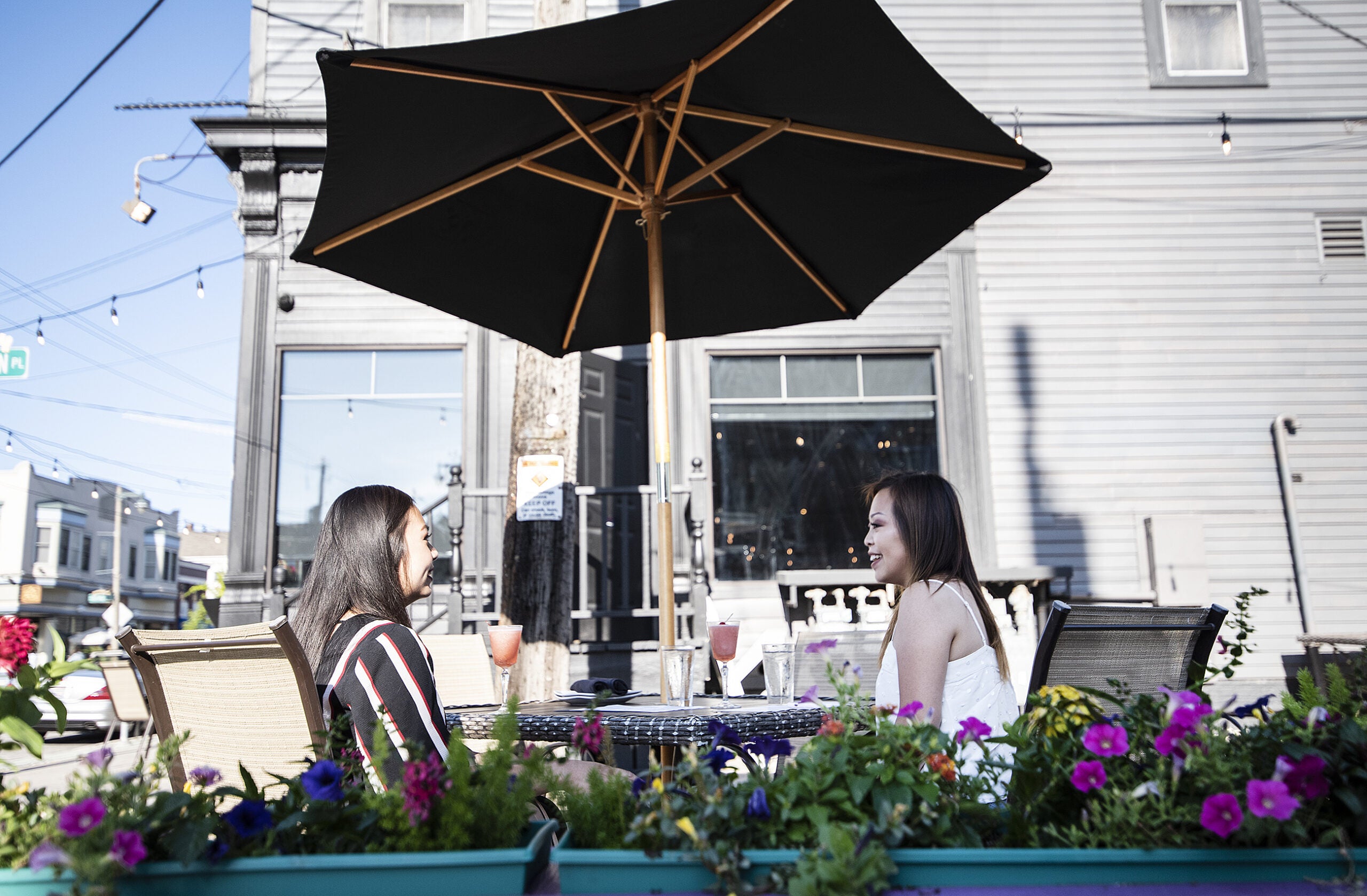
The state’s bar and restaurant industry overall has had a strong recovery from the COVID-19 pandemic, but that recovery hasn’t been even across the sector.
That’s according to a new report from the Wisconsin Policy Forum, which examined employment, sales and the lingering impacts of the pandemic.
While bars and restaurants were among the businesses most disrupted by the pandemic in 2020, the report found that employment in the industry has returned to pre-pandemic levels and state sales tax revenues from restaurants and bars have returned to its pre-pandemic trend line.
Stay informed on the latest news
Sign up for WPR’s email newsletter.
Kristine Hillmer, president and chief executive officer for the Wisconsin Restaurant Association, said the health of the industry is important because restaurants are the “backbone of Main Street,” serving as a vital social setting.
“They are a gathering place for busy families who need a quick bite to eat,” she said. “They’re a gathering place where you want to celebrate or mourn, or gather together with your friends just to socialize. It really is a unique thing for many communities who really want to have a vibrant town.”
This February, the industry had more employees than it did in the same month of 2020, according to the study. Last summer months, however, restaurants and bars did not reach their pre-pandemic high of 219,200 workers from August 2019.
“The summer of 2023, the numbers were still a little bit lower than summer 2019. But we could see that fully returned by this summer,” said Joe Peterangelo, a senior researcher for Wisconsin Policy Forum. “But overall, I’d say the employment numbers situation is generally pretty positive.”
While restaurants have returned to their pre-pandemic trend line in terms of sales tax revenues generated, many continue to operate at limited hours and fewer days open than they had prior to 2020, the report states.
Because inflation of wholesale food prices has led to higher menu prices, the report said its likely restaurants are earning a similar amount of revenue as before the pandemic with fewer total transactions and smaller orders, the study said.
“Even if the sales have rebounded, there’s still probably fewer sales happening overall,” Peterangelo said. “We don’t have numbers to show that.”
Certain types of restaurants continue to struggle, according to the report.
Hillmer with the restaurant association said mid-priced sit down restaurants have been more impacted by inflation than those in fine dining or fast food.
“Those that want to go out for that high-end steak dinner or seafood dinner are likely not to necessarily balk at some of the higher prices that are baked into the new menu prices because of inflation,” Hillmer said. “However, if you’ve got a family of four and you’re on a tight budget, and you’re making that decision to go out to a restaurant, you may be choosing to go out less or you may be choosing to have (a) lower priced item.”
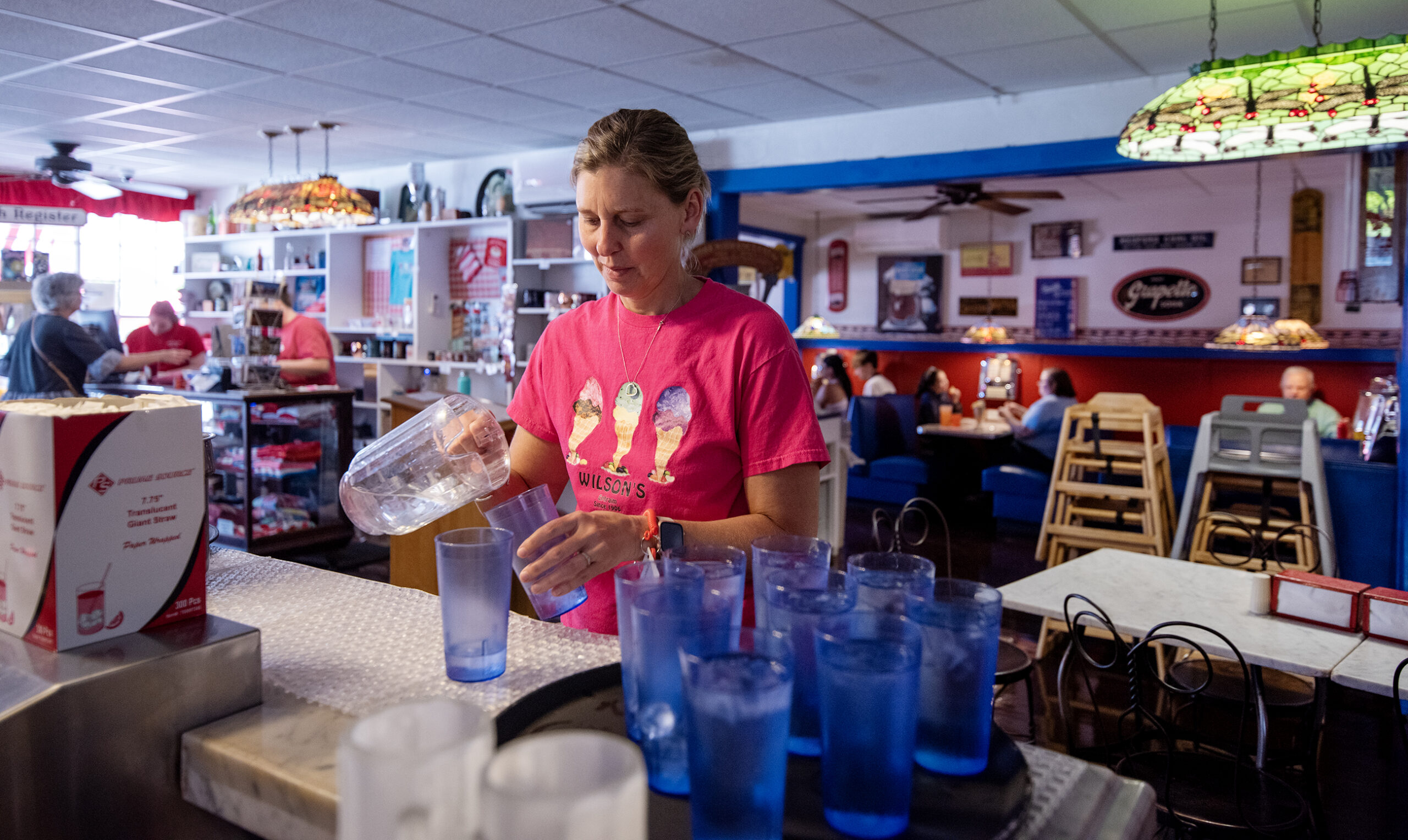
Despite those challenges, the policy forum found the number of bars and restaurants in Wisconsin has recovered. The report says the state had more of those establishments in the third quarter of 2023 than in the same period of 2019.
But the number of bars in Wisconsin, classified as “drinking places” by the U.S. Bureau of Labor Statistics, has been declining over the last few decades, the report said.
In 2022, Wisconsin had 20.3 percent fewer bars than in 2003, the study said. It did not have annual data for 2023.
“We do have almost as many people employed in bars as we did 20 years ago — it’s only 2.6 percent fewer people in 2022 than in 2003,” Peterangelo said. “What that means to me is it kind of supports that theory that we’ve lost small bars and we have larger establishments now that are employing almost as many people overall as they were 20 years ago.”
While restaurants continue to face challenges, the industry’s overall outlook is much better than it was in 2020 or 2021, the report said.
Hillmer said she’s “cautiously optimistic” about the future of the state’s eateries, especially if inflation continues to cool.
“As inflation slows down, there’s going to be more of an evening out of what (disposable) income is available,” she said. “When there’s more income, there’s always that desire to go out, eat and have a good time.”
-

 News1 week ago
News1 week agoThe states where abortion is on the ballot in November : Consider This from NPR
-

 News1 week ago
News1 week agoRead Prosecutors’ Filing on Mar-a-Lago Evidence in Trump Documents Case
-

 Politics1 week ago
Politics1 week agoMichael Cohen swore he had nothing derogatory on Trump, his ex-lawyer says – another lie – as testimony ends
-

 Politics1 week ago
Politics1 week agoAnti-Israel agitators interrupt Blinken Senate testimony, hauled out by Capitol police
-
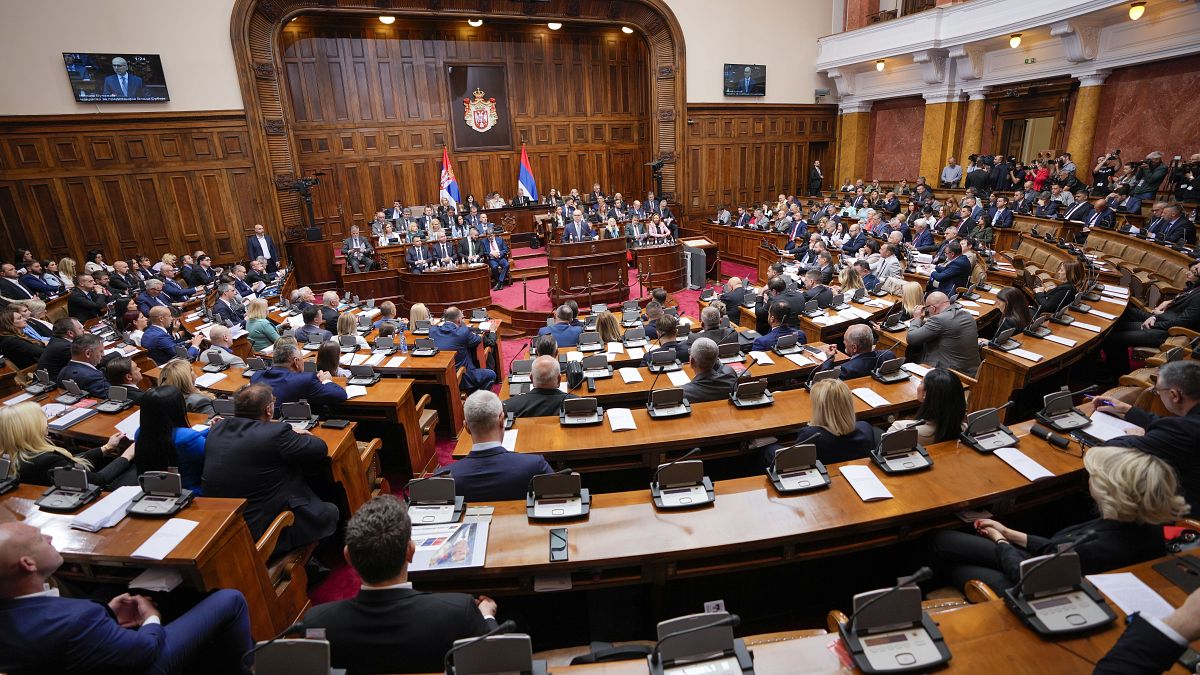
 World1 week ago
World1 week agoSerbian parliamentary minnow pushes for 'Russian law' equivalent
-

 World1 week ago
World1 week agoWho is Ali Bagheri Kani, Iran’s acting foreign minister?
-
Technology1 week ago
Microsoft’s new Windows Copilot Runtime aims to win over AI developers
-

 News1 week ago
News1 week agoBuy-now, pay-later returns and disputes are about to get federal oversight
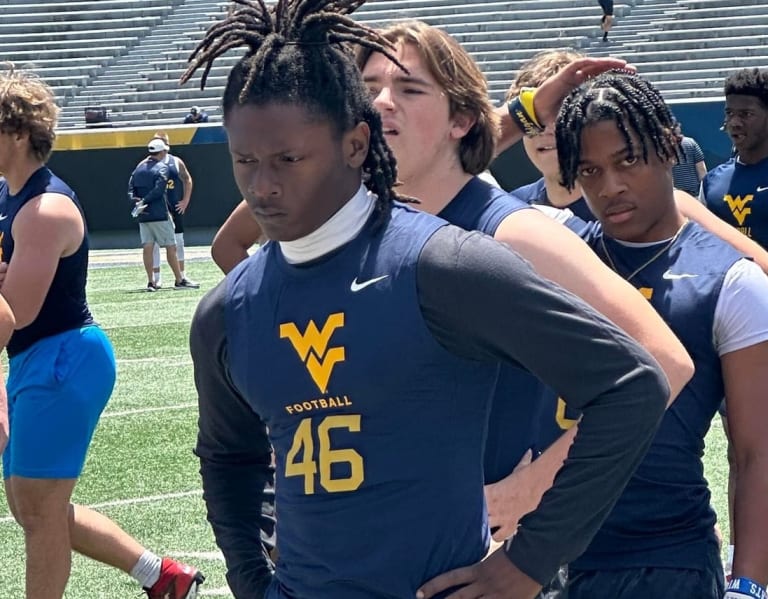



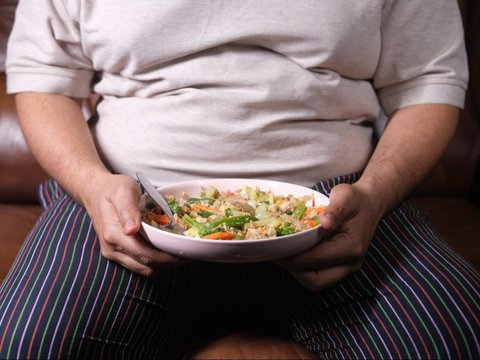











/cdn.vox-cdn.com/uploads/chorus_asset/file/25458338/DSC00620.JPG)